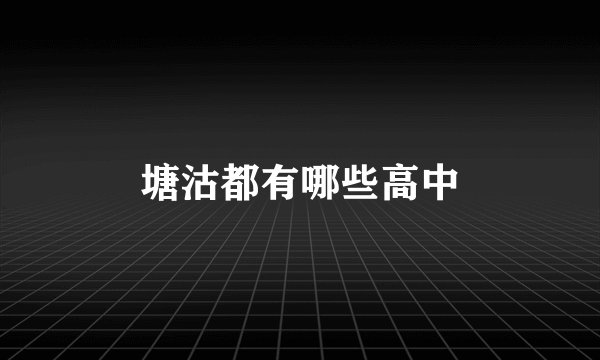高中英语语法讲解
的有关信息介绍如下:
高中英语语法的知识点,让我们一个一个的展开学习。下面是小编给大家整理的高中英语语法,供大家参阅!
高中英语语法:疑问句
反意疑问句
一.反意疑问句的分类:
1.第一类反意疑问句由两部分组成, 前一部分作陈述; 后一部分提问, 起证实或反证作用, 或只表示疑问语调的作用, 其肯定或否定与前一部分相反. 这一类反意疑问句实际上不表示疑问, 也并不一定要求对方回答
a. You haven’t done your homework, have you ?
b. You will be away for long, won’t you ?
2.第二类反意疑问句也由两部分组成, 前一部分作肯定的陈述, 用肯定形式, 后一部分提问也用肯定形式, 表示说话人对第一部分的陈述的真实性有所怀疑, 请对方加以证实
a. He teaches English, does he ?
二.应注意的问题:
1.疑问部分的主语与陈述部分的主语的对应:
①.陈述部分是there be结构时, 疑问部分用be(not) ther提问
a. There is no doubt about it, is there ?
b. There are hundreds of students on the playground, aren’t there ?
②.陈述部分的主语是everyone, someone, anyone, no one等表示人的不定代词时, 疑问部分主语多用they, 也可用he
a. Everyone knows his job, doesn’t he ? / Everyone knows their jobs, don’t they ?
③.陈述部分的主语是everything, nothing, something等表示物的不定代词时, 疑问部分的主语用it.
a. Everything goes very well, doesn’t it ?
④.陈述部分的主语是each时, 如果强调单个, 疑问部分的主语用单数代词; 如果强调全体, 疑问部分的主语用复数代词
a. Each of the students has his own desk, doesn’t he ?
b. Each of the students passed the exam, didn’t they ?
c. Each of the pens has a red cap, doesn’t it ?
⑤.陈述部分的主语是不定式, 动名词, 词组或从句时, 疑问部分的主语用it
a. To drive a car is not easy, is it ?
b. Seeing is believing, isn’t it ?
c. That you are leaving soon is true, isn’t it ?
⑥.陈述部分的主语是this , that, these, those时, 疑问部分的主语要用it 或they
a. This is very important, isn’t it ?
b. These are the books you bought yesterday, aren’t they ?
2.疑问部分的不完全动词与陈述部分的不完全动词的对应:
①.陈述部分没有不完全动词(即谓语中只有实义动词)时, 疑问部分用do的某形式来提问
a. He likes English very much, doesn’t he ?
b. He went to the cinema last Sunday, didn’t he ?
c. You have learned English for eight years, haven’t you ?
②.陈述部分的谓语是used to do(过去经常)时, 疑问部分既可用used, 也可用did提问
a. He used to live in London, usedn’t / didn’t he ?
③.若在陈述部分将need / dare / have作为不完全动词使用, 则疑问部分仍用need / dare / have提问; 若在陈述部分将need / dare / have作为实义动词来用, 则疑问部分用do的某一形式提问
a. We need to do it right now, don’t we ?
b. We needn’t do it right now, need we ?
c. You have finished your homework, haven’t you ?
d. You have a computer of you own, don’t you ?
④.陈述部分有must表示 【一定是, 肯定是】的推测意义时, 疑问部分不用must提问, 而要根据must所表示的时间, 用do / be的某一形式来提问, 具体对应情况见下表:
陈述部分谓语形式
含义
疑问部分用来提问的不完全动词
must do / be
一般情况或现在状态
do, am / is / are
must be doing
正在发生的情况
am / is / are
must have done
过去发生的情况
did
a. He must be a student in this school, isn’t he ?
b. You must be tired, aren’t you ?
c. They must be doing their lessons right now, aren’t they ?
d. You must have met him at the party yesterday, didn’t you ?
⑤.陈述部分有must表示【有必要】时, 疑问部分用needn’t提问
a. You must go home right now, needn’t you ?
3.其他问题:
①.陈述部分谓语出现有否定词缀的动词时, 疑问部分仍用否定结构
a. He is unfit for his office, isn’t he ?
②.陈述部分含有no, never, hardly, seldom, few, little, nowhere, nothing等否定词或半否定词时, 疑问部分要用肯定形式
a. He hardly knows English, does he ?
③.陈述部分的主语是I时, 疑问部分中否定常用aren’t I.
a. I am your friend, aren’t I ?
④.陈述部分是I ( don’t ) think / believe / suppose / expect that….(即【否定转移句】)时, 疑问部分要根据that引导的宾语从句来作
a. I think he can finish the work, can’t he ?
b. I don’t think he can finish the work, can he ?
陈述部分谓语形式含义疑问部分用来提问的不完全动词
must do / be一般情况或现在状态do, am / is / are
must be doing正在发生的情况am / is / are
must have done过去发生的情况did
a. He must be a student in this school, isn’t he ?
b. You must be tired, aren’t you ?
c. They must be doing their lessons right now, aren’t they ?
d. You must have met him at the party yesterday, didn’t you ?
⑤.陈述部分有must表示【有必要】时, 疑问部分用needn’t提问
a. You must go home right now, needn’t you ?
3.其他问题:
①.陈述部分谓语出现有否定词缀的动词时, 疑问部分仍用否定结构
a. He is unfit for his office, isn’t he ?
②.陈述部分含有no, never, hardly, seldom, few, little, nowhere, nothing等否定词或半否定词时, 疑问部分要用肯定形式
a. He hardly knows English, does he ?
③.陈述部分的主语是I时, 疑问部分中否定常用aren’t I.
a. I am your friend, aren’t I ?
④.陈述部分是I ( don’t ) think / believe / suppose / expect that….(即【否定转移句】)时, 疑问部分要根据that引导的宾语从句来作
a. I think he can finish the work, can’t he ?
b. I don’t think he can finish the work, can he ?
第二十章:直接引语与间接引语
一.直接引语与间接引语的转换:
1.直接引语是陈述句, 变成间接引语时将陈述句变成that引导的宾语从句
a. Mary said, 【 I arrived yesterday.】 =Mary said that she had arrived the day before.
b. Alice said, 【 I’ve just got a letter from my father.】 =Alice said that she had just got a letter from her father.
2.直接引语是一般疑问句, 变成间接引语时, 把一般疑问句变成由if / whether引导的宾语从句, 同时将语序改成陈述语序, said变成asked, asked后没有间接宾语时, 要加一个间接宾语如me / him /her等
a. Jane asked Tom, 【 Have you finished writing the report ?】 =Jane asked Tom if / whether he had finished writing the report.
b. Jane asked Dick, 【 Have you finished writing the report ?】 =Jane asked Dick if / whether he had finished writing the report.
3.直接引语是特殊疑问句, 变成间接引语时, 特殊疑问句变成由原疑问词引导的宾语从句, 同时变成陈述语序
a. 【What are you doing Jack ?】 Mary asked. =Mary asked him what he was doing.
b. They asked him, 【 When do you harvest the wheat ?】 =They asked him when he harvested the wheat.
c. 【When did you leave Shanghai ?】 Peter asked me. =Peter asked me when I left Shanghai.
4.直接引语是祈使句, 变成间接引语时, 把祈使句变成一个不定式短语, 同时根据不同的口气选用适当的谓语动词, 构成ask / tell / order sb (not) to do sth.的结构
a. 【Don’t come late again.】 he said. =He told me not to come late again.
b. 【Turn the oil over, please.】 He said. =He asked me to turn the soil over.
c. The farmer said, 【 Don’t grow plants in the same place year after year.】 =The farmer told me not to grow plants in the same place year after year.
二.应注意的问题: 在直接引语变成间接引语时要注意以下问题
1.人称代词, 物主代词要作相应的变化, 这方面的变化与汉语的习惯完全相同
a. He said, 【 I like it very much.】 =He said that he liked it very much.
b. He said, 【 I have left my book in your room.】 =He said he had left his book in my room.
2.时态的变化: 如果主句的谓语动词是一般过去时, 直接引语变成间接引语时, 从句的谓语动词在时态方面要作相应的变化(见下表); 如果主句的谓语动词是现在时, 从句的时态无需变化
直接引语间接引语
一般现在时He said, 【 I am afraid I can’t finish this work】一般过去时He said that he was afraid he couldn’t finish that work
现在进行时He said, 【 I am using the knife.】过去进行时He said that he was using the knife.
现在完成时She said, 【 I have not heard from him since May.】过去完成时She said that she had not heard from him since May.
一般过去时He said, 【 I came to help you.】过去完成时He said that he had come to help me.
过去完成时He said, 【 I had finished my homework before supper.】过去完成时He said that he had finished his homework before supper.
一般将来时Zhou Lan said, 【 I will do it after class.】过去将来时Zhou Lan said that she would do it after class.
3.某些指示代词, 时间状语, 地点状语和动词要做相应的变化:
直接引语间接引语
this She said, 【 I will come this morning.】thatShe said that she would go that morning.
theseHe said, 【 These books are mine.】thoseHe said that those books were his.
nowHe said, 【 It is nine o’clock now.】thenHe said that it was nine o’clock then.
todayHe said, 【 I haven’t seen her today.】that dayHe said that he hadn’t seen her that day.
yesterdayShe said, 【 I went there yesterday.】the day beforeShe said that she had gone there the day before.
tomorrowShe said, 【 I will go there tomorrow.】the next / following dayShe said that she would go there the next day.
hereHe said, 【 My sister was here three days ago.】thereHe said that his sister had been there three days before.
comeShe said, 【 I will come here this evening.】goShe said that she would go there that evening.
agoHe said, 【 I went there three days ago.】beforeHe said that he had gone there three days before.
last nightHe said, 【 I saw the film last night.】the night beforeHe said that he had seen the film the night before.
next weekHe said, 【 The meeting will be held next week.】the next weekHe said that the meeting would be held the next week.
4.直接引语如果是客观真理, 变为间接引语时, 时态不变, 如:
a. He said, 【 Light travels much faster than sound.】 =He said that light travels much faster than sound.
5.如果在当地转述, here不必改为there, come不必改为go, yesterday / tomorrow等时间状语也不必改变
高中英语语法:主谓倒装
一.总述: 参看 【语法框架】中 【前置与倒装】部分
二.倒装主要用于以下情形之下:
1.含有否定含义的连词或副词或词组(如: not, not only, never, little, seldom, hardly, hardly...when..., no sooner... than... , at no time, neither, nor, never before, not until等)位于句首时, 常用部分倒装的语序
a. Not a single mistake did he make in the exam.
b. Never shall I forget day when I was with her.
c. Not only can he play the piano, but he also can write songs.
d. Hardly had I reached the bus stop when the bus started.
e. Little does she know what may happen.
f. Seldom have I met her recently.
g. Not until after the war did he return home.
h. No sooner had I reached home than it began to rain heavily.
not only...but also...连接两个主语时, not only即使是在句首, 也不用倒装语序
a. Not only the students but also the teachers went there to listen to the lecture.
2.由于主语太长或为了强调而将地点状语(多为介词短语)或表语前置时, 多用全部倒装的语序
a. In a lecture hall of a university in England sits a professor.
b. Outside the classroom stood a boy.
c. Behind the farmhouse was a big tree.
d. On the blackboard were the words written in English: 【Welcome to our class !】
e. Under the big tree was sitting an old farmer.
f. At the foot of the hill lies a beautiful lake.
3.only修饰的状语位于句首时, 用部分倒装的语序
a. Only then did I realize that I was wrong.
b. Only in this way can you learn it by heart.
c. Only after the country was liberated in 1949 was he able to live a happy life.
4.有时为强调或表达生动, 将now, here, there, out, in, up, down, away等副词前置, 句子用全部倒装的语序
a. Now comes your turn.
b. Here comes the taxi.
c. There goes the bell.
d. Out rushed the school boys.
e. Away flew the birds.
f. Down came the rain.
g. The door burst open and in rushed a stranger.
在以上情况下, 当主语为代词时, 主谓不倒装
a. There it is.
b. Away he went.
5.用于以so开头表示 【也…】, 以neither / nor开头表示 【也不…】的句型
①.句型 【so+不完全动词+主语】表示 【也…】, 即上文所述的肯定情况对于本句的主语来说也是如此
a. They went to the Summer Palace last Sunday. So did we.
b. He has been to the Great Wall. So have I.
②.句型 【neither / nor+不完全动词+主语】表示 【也不…】, 即上文所述的否定情况对于本句的主语来说也不如此
a. I didn’t do my homework yesterday evening. Neither / Nor did he.
b. The students are not in the classroom. Neither / Nor was the teacher.
6.直接引语前置时, 如果主语是名词, 常用全部倒装的语序; 如果主语是代词, 往往不用倒装语序
a. 【You all did well in the exam.】 said the teacher.
b. 【Who are you looking for?】 she asked / asked Mary.
c. 【That is unfair !】 shouted the man / he shouted.
7.用于以were, had, should等词开头的虚



